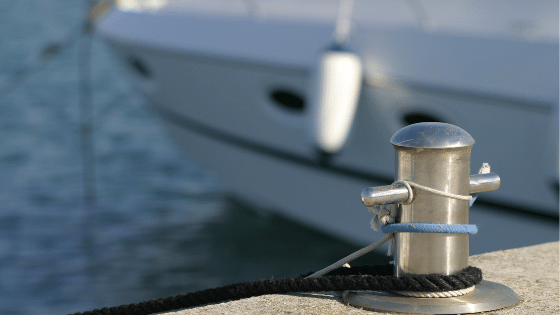316L stainless steel plate is a widely used stainless steel product with excellent corrosion resistance. Kloeckner Metals is proud to supply it nationwide throughout our network of 40+ branches.

316L stainless steel plate is a versatile austenitic stainless steel product that demonstrates superior resistance to corrosion. The addition of molybdenum leads to exceptional performance in corrosive environments making it a commonly chosen material for chemical processing equipment, heat exchangers, jet engine parts, evaporators, textile processing equipment, and tubing exposed to marine environments.
This stainless steel grade shows some of the best corrosion resistance within the stainless steel family and can be conveniently welded. It is also highly ductile and easy to form. Because 316L is an austenitic steel, it is non-hardenable by heat treatment.
316L stainless steel plate can be found in the food and dairy, brewing, textile, chemical processing, and pharmaceutical industries.
Applications for this stainless steel grade include digesters, chemical and textile processing equipment. Other applications where corrosion resistance is a top priority are common for this grade.
It is machinable.
316L is weldable. This stainless steel is easier to weld with less risk for intergranular corrosion and cracking than other stainless steels. Therefore it can be selected for applications where more welds are required.
It is not heat treatable.
This stainless steel grade shows some of the best corrosion resistance within the stainless steel family and can be conveniently welded. It is also highly ductile and easy to form. Because 316L is an austenitic steel, it is non-hardenable by heat treatment.
316L stainless steel plate can be found in the food and dairy, brewing, textile, chemical processing, and pharmaceutical industries.
Applications for this stainless steel grade include digesters, chemical and textile processing equipment. Other applications where corrosion resistance is a top priority are common for this grade.
It is machinable.
316L is weldable. This stainless steel is easier to weld with less risk for intergranular corrosion and cracking than other stainless steels. Therefore it can be selected for applications where more welds are required.
It is not heat treatable.
ANSWER:
It performs extremely well at temperatures up to 120°F.
ANSWER:
Marine grade stainless steels are specifically engineered to withstand highly corrosive environments, like where high concentrations of acids are present.
ANSWER:
You might notice the letters L, F, N, or H following some stainless steels and wonder what these letters mean. These letters indicate slight differences in chemical composition and suggest how a particular stainless steel grade should be used. In the case of 316L, the L indicates that there is less carbon than is found in the 316 grade. It is considered the “ultra low” carbon variant.
ANSWER:
It performs extremely well at temperatures up to 120°F.
ANSWER:
Marine grade stainless steels are specifically engineered to withstand highly corrosive environments, like where high concentrations of acids are present.
ANSWER:
You might notice the letters L, F, N, or H following some stainless steels and wonder what these letters mean. These letters indicate slight differences in chemical composition and suggest how a particular stainless steel grade should be used. In the case of 316L, the L indicates that there is less carbon than is found in the 316 grade. It is considered the “ultra low” carbon variant.
Kloeckner’s metal roofing manufacturing showcases the flexibility,...
Steel base plates are fundamental elements employed in various manufacturing processes. These flat, rectangular...
Metal fabrication is a critical process that transforms raw metal materials into finished products....
The solar industry has undergone a significant transformation by incorporating steel products into various...
The unprecedented pace of solar growth is challenging and reforming America’s construction and engineering...
If you’ve got a roof over your head, it’s partly thanks to purlins. A...
Acquiring highly profitable company with annual sales of around USD 30 million Significant expansion...
A stainless steel depot is a specialized facility or supplier that stocks and provides...
American manufacturers use about 28.2 billion pounds of aluminum every year, 41.6% of it...
Leading steel distributor expands commitment to sustainability in the North American market. Kloeckner Metals,...
At Kloeckner, we are excited to announce that our Santa Fe Springs, CA location...

X
The Kloeckner Metals website uses modern technologies. Unfortunately, your browser doesn't support those technologies.
Download the latest version of one of these browsers to experience the site: